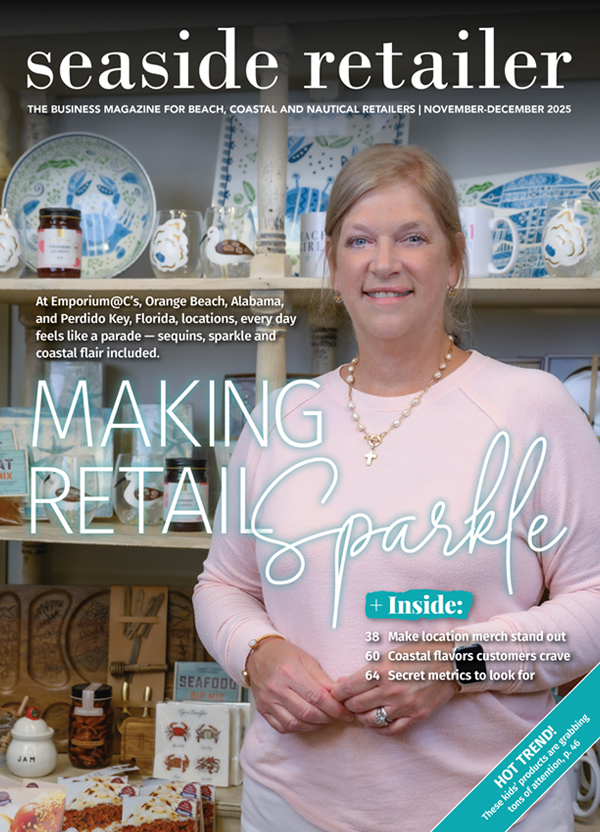
It’s a common mistake: showing too much merchandise or too many different product categories mixed up together.
We’ve all seen stores like this: the products are all over the place, filling up every available space. When we simply have too much of everything everywhere, we overwhelm the customers and fail to influence what they see.
A great exercise for overcoming the too-much-of-everything problem is to think of your store as a book you’re writing.
Start with a good title and attractive cover. The title is your store’s name. The cover is how the store looks from the outside.
Both the name of your store, its facade and its window display should be clever and intriguing enough to invite the reader to open the book — want to come inside and shop.
Once you have them inside, then comes the next step in the creative process. As the shoppers read each section, they should be drawn deeper into your selling space.
The opening chapter of a book usually determines whether a reader will keep turning the pages. So what your customers see when they enter your store is vital; it should entice them into exploring the rest of the space. They should want to read (see) more.
"Just as a good writer carefully chooses which words to include and which to leave out for maximum impact, so should you edit the types and quantities of merchandise you show."
Create a story, giving each section of the store its own precipitating incident — a focal display that draws your customers closer to the merchandise. An effective display creates a rising action, an emotional connection that moves the customer closer to making an actual purchase.
A good book has chapters that unfold its story in a logical sequence; so should your displays. In other words, try not to have kitchen towels displayed adjacent to backpacks, greeting cards and various clothing accessories. These items just don’t go together.
All the products should instead be grouped within solid categories. Display all the fashion accessories — the scarves, fashion jewelry, handbags and small leather goods — together in one eye-catching section, which will also encourage multiple sales.
Just as a good writer carefully chooses which words to include and which to leave out for maximum impact, so should you edit the types and quantities of merchandise you show.
Your store is a stage where you get to choreograph the way the players — the customers — move through it.
A clear, uncluttered plot will tell the story not only of the products you’re selling but will also allow your customers to see how they will derive value from using those products.
So transform your store into a juicy suspense-filled mystery or a magical tale full of fun and whimsy.
Whatever genre you choose, tell a great story that will leave your customers wanting to revisit it again and again.

